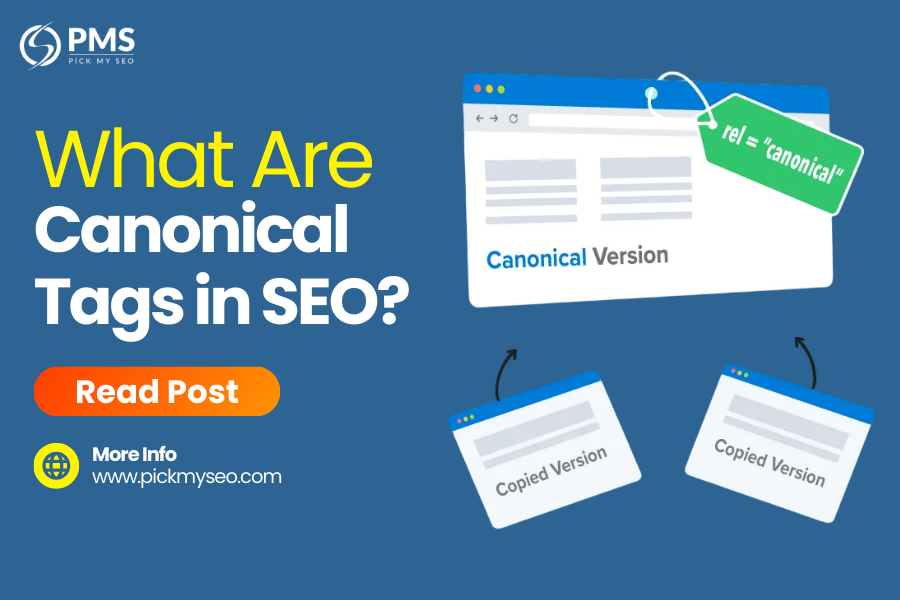In the world of digital marketing, small technical details often have a big impact. One such detail that website owners and marketers need to understand is the use of canonical tags. Though not often discussed outside technical circles, canonical tag play a crucial role in improving SEO and helping search engines better understand your website.
As more businesses rely on online visibility to grow, knowing how to use canonical tags correctly can prevent serious issues like duplicate content, loss of traffic, and ranking problems.
Let’s break down what is canonical tag are, why they matter, and how they can improve your site’s performance in search engines.
What is a Canonical Tag?
A canonical tag is a small piece of HTML code that tells search engines which version of a web page is the “master” or preferred version when there are multiple versions of the same content.
For example, your website might show the same product under different URLs:
- www.example.com/products/shoes
- www.example.com/shoes?colour=blue
- www.example.com/shoes?sort=price
Even though the content is the same, search engines see them as separate pages. This can cause confusion, dilute your page authority, and impact your SEO.
By adding a canonical tag to the HTML of each duplicate page, pointing to the main version (e.g. www.example.com/products/shoes), you help search engines understand which version to index and rank.
Why Are Canonical Tags Important?
Canonical tags are important because they help manage duplicate content. Duplicate content can hurt your SEO in several ways:
- Search engines may not know which page to rank.
- Your link equity (ranking power from backlinks) can get split across multiple URLs.
- It wastes the crawl budget as search engines spend time indexing duplicates.
Using canonical tags solves these problems by guiding search engines to the main version of a page, consolidating ranking signals, and improving overall site clarity.
How Canonical Tags Work in SEO
When a search engine like Google crawls your website and sees a canonical tag, it treats the tagged page as a duplicate and prioritises the page that the canonical tag points to. This boosts the SEO performance of the preferred page, helping it rank higher while preventing the duplicates from competing with each other.
For example, if you run an online store and have several URLs showing the same product (due to filters, sorting, or tracking codes), you can use canonical tags to tell Google which one to focus on.
This is especially helpful in e-commerce, blogs with content archives, or websites that use session IDs and tracking parameters in URLs.
Common Scenarios Where Canonical Tags Are Used
- Duplicate Product Pages: E-commerce sites often have the same item listed under different categories or filters. Canonical tag keep things clean and avoid SEO issues.
- Content Syndication: If your article is published on another website, adding a canonical tag pointing back to your original content helps preserve your ranking.
- HTTPS vs HTTP / www vs non-www: Canonical tags help indicate the correct version of a site, especially if multiple versions are accessible.
- Print-Friendly Versions of Pages: Sometimes sites offer print versions of a page. Using canonical tag helps avoid content duplication.
How to Add Canonical Tags to a Website
Adding a canonical tag is simple. It goes in the <head> section of the HTML page. Here’s an example:
html
CopyEdit
<link rel=”canonical” href=”https://www.example.com/preferred-page” />
It’s important to:
- Use absolute URLs, not relative ones.
- Point to the correct, preferred version.
- Ensure consistency across all duplicates.
For WordPress users, many SEO plugins like Yoast or Rank Math allow you to add canonical tags easily without editing code manually.
Best Practices for Using Canonical Tags
To make the most of canonical tags, follow these tips:
- Be consistent: Use the same canonical URL across all duplicate or similar pages.
- Only one canonical per page: Avoid placing multiple canonical tags, as it confuses search engines.
- Don’t point all pages to homepage: Only use canonical tag for actual duplicates, not unrelated pages.
- Combine with other SEO tools: Canonical tags work well with sitemap files, internal linking, and redirect strategies.
When used properly, canonical tag enhance your website’s structure and make your SEO strategy more efficient.
Canonical Tags vs Redirects: What’s the Difference?
While both canonical tags and 301 redirects deal with duplicate or similar content, they serve different purposes.
- 301 Redirect: Sends visitors and search engines to a different page. It’s used when a page is permanently moved.
- Canonical Tag: Tells search engines which version of a page is preferred, without changing what users see.
Canonical tag is best when you want to keep multiple pages live but want search engines to focus on one.
Challenges in Using Canonical Tags
Although canonical tags are powerful, incorrect use can cause SEO problems:
- Wrong URL in the tag: This might cause your important content to be ignored.
- Self-referencing issues: Not having self-referencing canonical tags on primary pages may confuse crawlers.
- Incorrect setup in CMS: Content management systems might automatically generate incorrect canonicals if not properly configured.
It’s a good idea to audit your site regularly using tools like Google Search Console or Screaming Frog to check canonical tag accuracy.
Impact on SEO Performance
Correct use of canonical tags improves crawl efficiency, consolidates link equity, and enhances the ranking of your main content. This, in turn, leads to:
- Better visibility in search engine results
- Higher organic traffic
- More consistent user experience
Without canonical tags, even the best content can underperform due to internal competition and indexing errors.
Final Thoughts
While often overlooked, canonical tags are an essential part of a solid SEO strategy. They help search engines identify the right version of a page, prevent duplicate content issues, and improve site authority.
Whether you run a blog, a local business site, or a large e-commerce platform, using canonical tags correctly ensures that your SEO efforts aren’t wasted. As Google continues to focus on quality and clarity, small technical improvements like these can lead to big gains in online visibility.
If you want your website to be understood correctly by search engines and avoid common pitfalls, implementing canonical tags should be on your SEO checklist.
Frequently Asked Questions
A canonical URL is the main version of a webpage that you want search engines to focus on.
Example: https://www.example.com/shoes instead of https://www.example.com/shoes?ref=123.
Yes, canonical tags help search engines understand which version of a page to index. This avoids duplicate content and can improve your SEO.
You can check by right-clicking on the page, selecting “View Page Source,” and looking for <link rel="canonical" href="...">.
Place this line in the <head> section of your webpage:
<link rel="canonical" href="https://www.example.com/page-url" />
Update the HTML code and replace the wrong canonical URL with the correct one that you want search engines to index.






